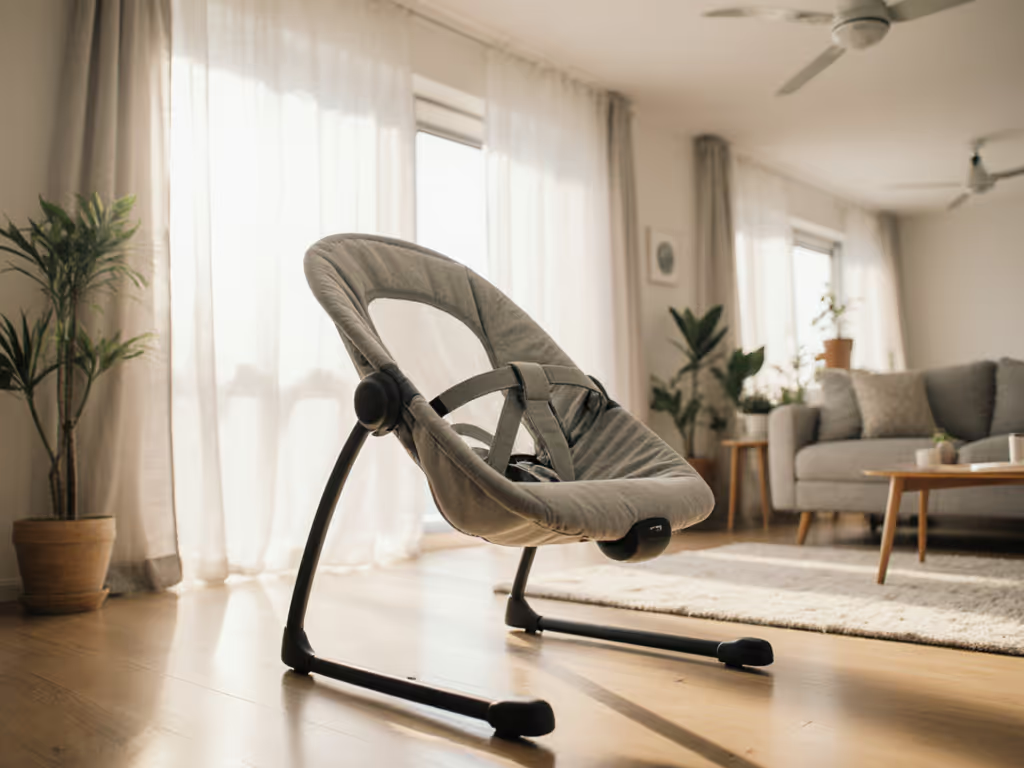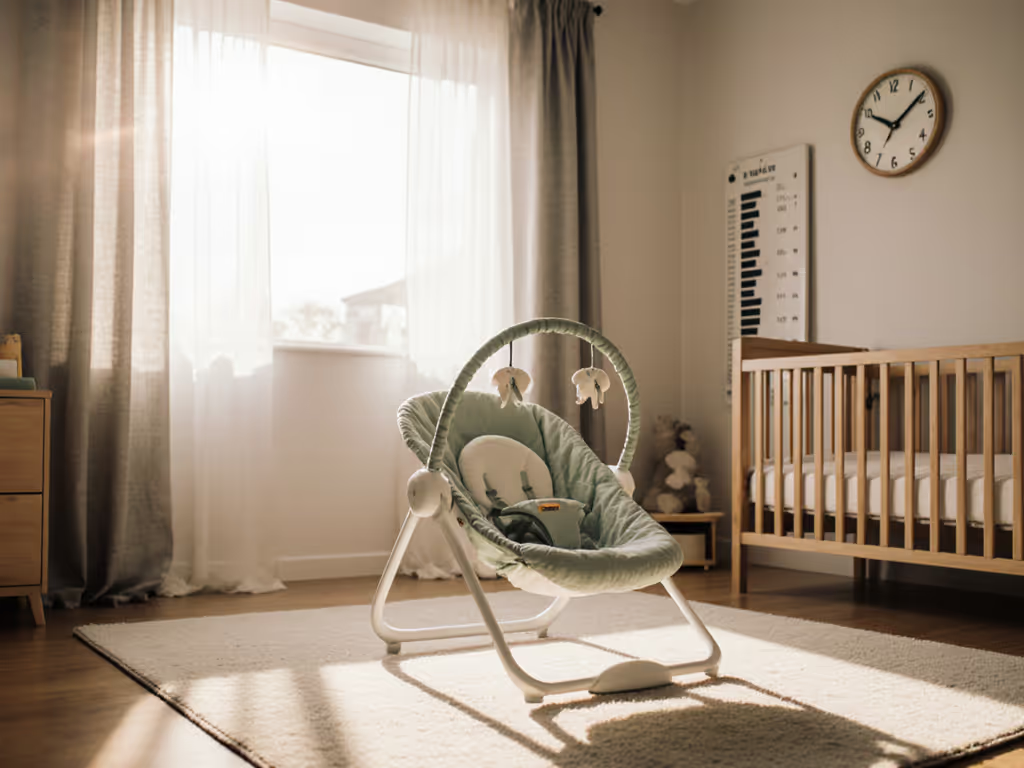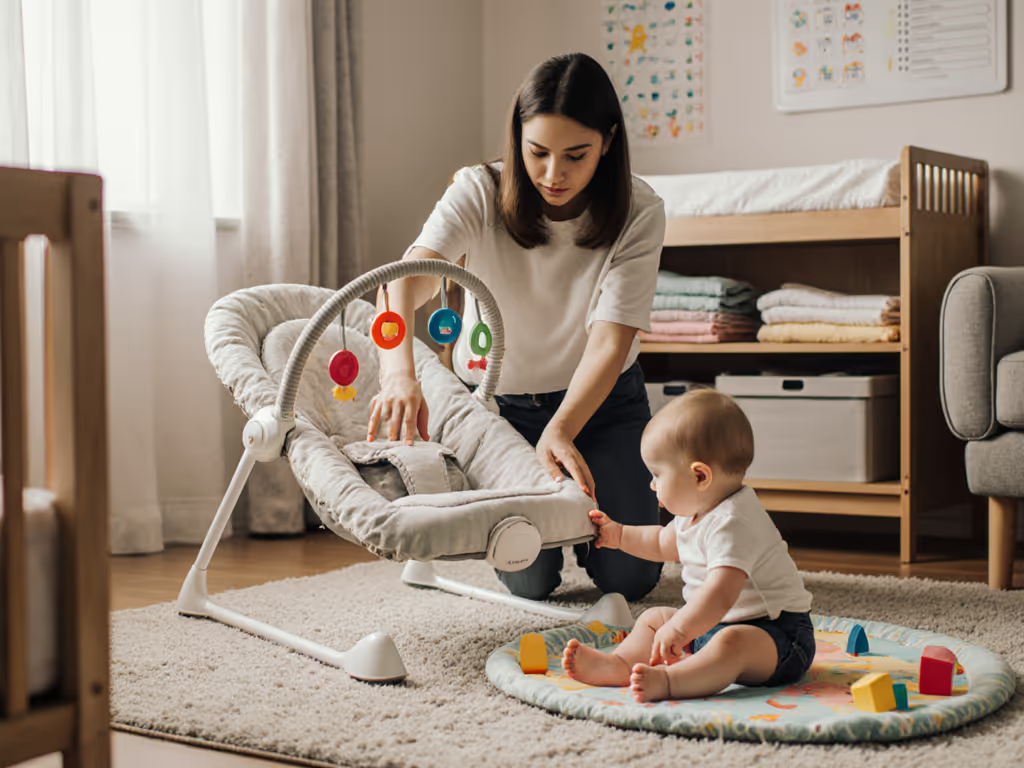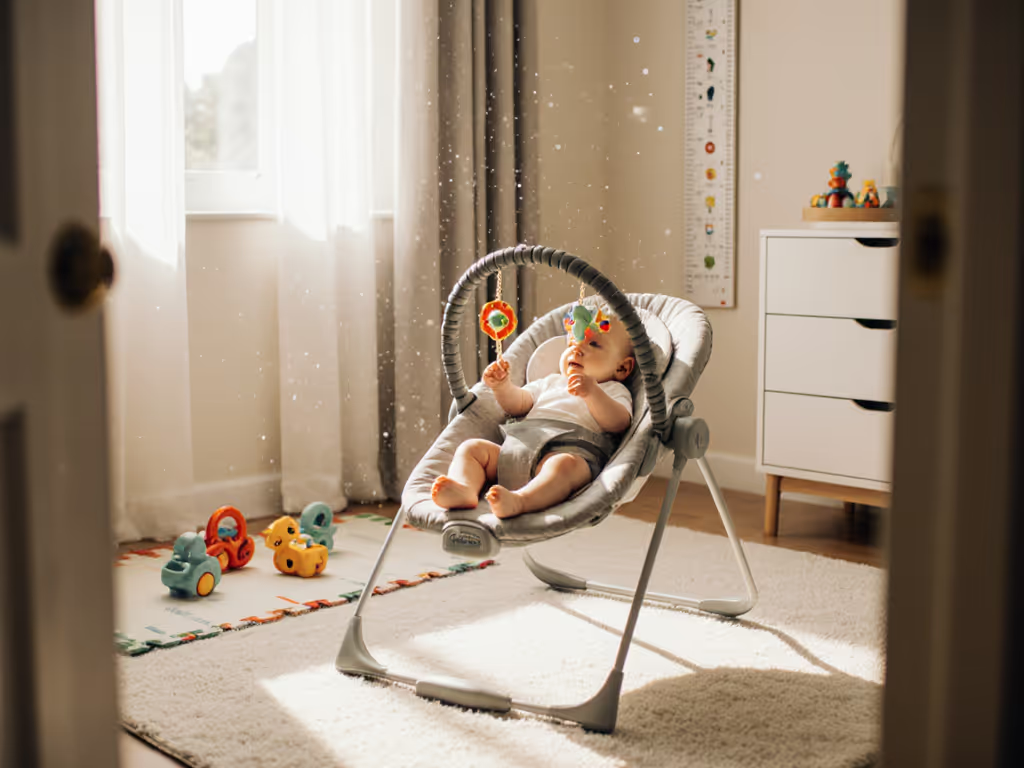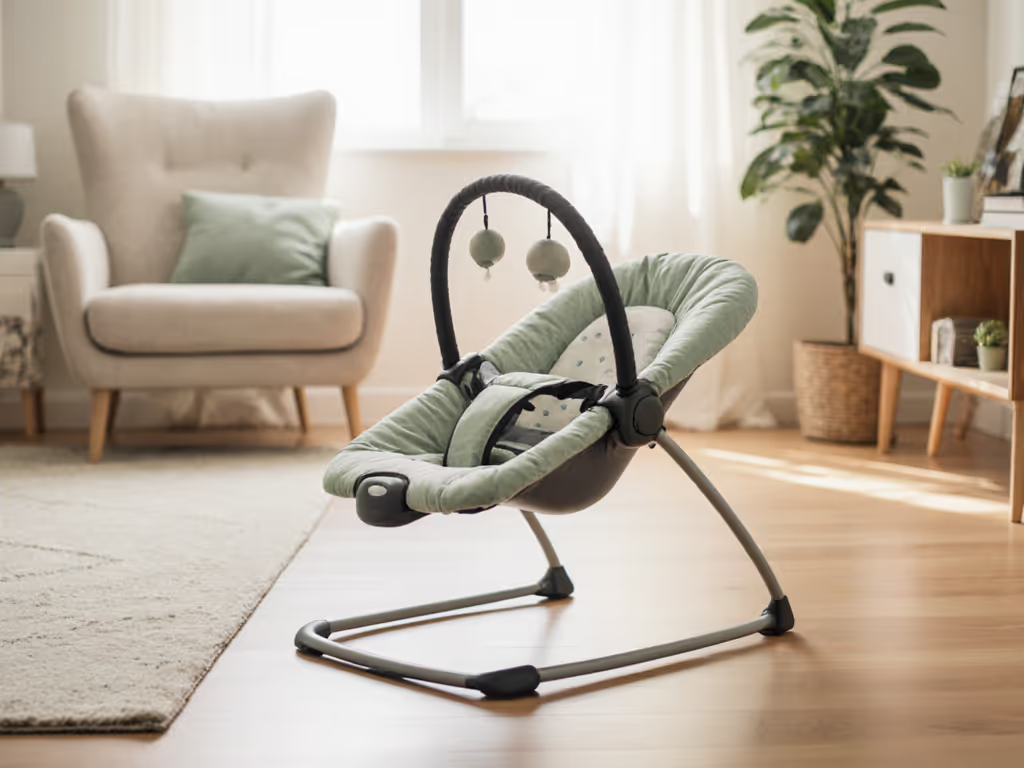When that precious newborn arrives, space feels like the rarest commodity, especially in compact urban homes. You're drawn to the promise of a quiet moment while your baby enjoys an infant bouncer seat, but safety concerns and conflicting advice leave you unsure. What's the right infant bouncer age? When does it become unsafe? How long can you actually use it? I've fielded these questions from countless exhausted parents in my infant safety workshops, and the truth is that understanding these timelines isn't just helpful, it is essential for your peace of mind. Let's cut through the confusion with clear, evidence-based guidance that fits your real-life constraints.
What is the appropriate infant bouncer age for newborns?
Newborns can safely use an infant bouncer seat starting immediately, if it provides proper head and neck support. Look for models with a deep recline (30 to 45 degrees) that keeps your baby's airway open, as their neck muscles are still developing. The American Academy of Pediatrics confirms that babies under 3 months need this near-flat positioning to prevent positional asphyxia.
Safety lives in routines, not marketing claims or modes.
In my parent circles, I often hear caregivers express relief when they learn they can use a bouncer early, but with boundaries. That reclined position is perfect for short supervised moments while you shower or prepare a meal, but always remember: the infant bouncer seat is not a nap spot. Newborns need flat, firm sleep surfaces; their developing airways can't handle the slight incline of even the most reclined bouncer for extended periods.
When should you stop using an infant bouncer seat?
Most manufacturers set an upper limit of 6 months or 20 to 25 pounds, but your baby's development matters more than the calendar. Watch for these three signs:
- Head control milestones: when your baby consistently holds their head steady without support
- Rolling attempts: any sign of rolling over while seated
- Climbing motions: pushing up on hands or trying to scoot out
I once worked with a parent who shared how their infant started leaning precariously to one side in the bouncer at 5 months. Once we recognized this as an early sign of rolling readiness, they transitioned to floor play, giving both of them more confidence. Remember, safety is a routine you practice, not a feature you buy. When those developmental shifts happen, it's time to retire the bouncer for that stage of your journey.
What are the most critical infant bouncer safety tips for small-space living?
Living in tight quarters presents unique challenges. Here are my top baby bouncer safety tips tailored for apartment and condo dwellers:
- Prioritize stability over portability: choose low-profile models with wide bases that won't tip when bumped against walls or furniture
- Verify non-slip feet: especially crucial on hardwood or tile floors common in urban rentals
- Check harness security: a 3- or 5-point harness should stay snug without pinching (test it before buying)
- Measure clearance: ensure 18 inches of space on all sides to prevent tipping into nearby furniture
- Never place on elevated surfaces: even in cramped quarters, the floor is the only safe location
One of my design-conscious clients loved how a simple bouncer with neutral fabric blended into her living space, until she realized the lightweight frame tipped dangerously close to her sofa. Switching to a lower-center-of-gravity model gave her back those precious hands-free minutes without compromising safety.
How long should babies stay in an infant bouncer seat at one time?
Here's a timer-based routine I recommend to parents: use the 20-minute rule for newborns (0 to 3 months) and 30 minutes for infants (3 to 6 months). Set your phone timer each session (not because bouncers are inherently dangerous, but because babies need varied positions for healthy development).
Extended time in any seated device can contribute to flat head syndrome or delay motor skills. I encourage parents to pair bouncer time with frequent position changes: 20 minutes in the bouncer, followed by 20 minutes on the floor for tummy time or supervised play. This creates a natural rhythm that fits into your daily flow without overwhelming you.
What are the most common mistakes parents make with infant bouncer seats?
From my years of infant safety education, these errors come up repeatedly, even among careful caregivers:
- Using as a sleep solution: that quiet moment when baby drifts off in the bouncer is tempting, but always move them to a safe sleep surface immediately
- Ignoring weight limits: continuing use past the manufacturer's maximum even when baby seems "fine" in it
- Adding aftermarket accessories: those cute hanging toys look appealing but create strangulation risks for newborns
- Leaving baby unattended: even for "just a minute" while you grab something across the room
I recall a parent circle where someone whispered they'd been letting their newborn nap in the bouncer because it was the only quiet moment they got. We timed a soothing routine together and practiced moving to a flat, safe sleep surface. Short stints, supervised use, and quick transitions gave them calm without compromising safety.
How can you integrate an infant bouncer seat safely into your compact home routine?
For urban parents working with limited square footage, here's my practical approach:
- Choose one dedicated spot: not multiple locations you move between (reduces tripping hazards and setup errors)
- Clear the perimeter: keep cords, hanging curtains, and nearby furniture at least 18 inches away
- Use visual timers: place your phone where you'll see it without turning your back on baby
- Keep essentials within arm's reach: diapers, wipes, and burp cloths in a caddy beside you
- Schedule bouncer time: align with your natural breaks (while coffee brews, during podcast interludes)
Remember: the infant bouncer age window is intentionally brief, designed for developmental stages, not convenience. When your baby outgrows it, that seat isn't a failure; it served its purpose during those early, demanding months.
Your Actionable Next Step
Tonight, dedicate five quiet minutes to check your bouncer's age and weight limits against your baby's current measurements. Set a reminder on your phone for when they'll likely reach those upper limits (most babies hit 20 pounds between 5 and 7 months). Then, create a simple transition plan: what calming alternative (floor mat, activity gym) will you move to once the bouncer retires? For step-by-step timing, milestones, and alternatives, see our outgrowing the bouncer guide. This tiny habit builds the safety routines that truly protect your baby, not the device itself. Because when it comes to infant safety, the infant bouncer seat is not a nap spot, and awareness beats anxiety every time.
